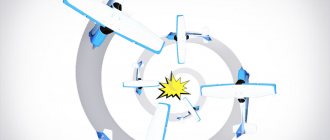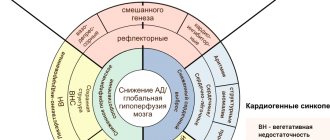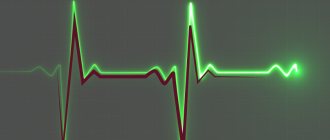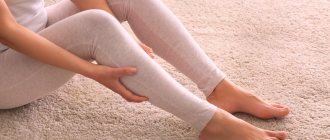Alalia is the name given to underdevelopment or complete absence of speech in children. This is the result of damage to the central nervous system that occurred either in fetal development or in the first 3 years of the child’s life. If the necessary measures are not taken in time, a child with such a disease will never learn to talk.
Alalia is in no way associated with intellectual or hearing impairments of the child. There are cases when patients with this disease began to talk only after reaching school age.
Please note: Alalia is a disease that cannot be treated independently. To find out an accurate diagnosis and receive subsequent treatment, you need to contact a neurologist who will examine the child.
The appearance of secondary speech delay occurs if treatment for alalia was started at a later age of the patient. Children with this disease demonstrate a poorer knowledge of the world around them than their peers. Alalia is accompanied by violations of lexical, phonetic, syntactic, morphological and grammatical speech.
Sensory alalia
This is a developmental defect in which the patient does not speak himself. He is also unable to understand the words that are addressed to him. Among children who suffer from problems associated with the speech apparatus, sensory alalia occurs only in 10% of cases.
With sensory alalia, the child does not understand the speech of others, and his speech does not develop. Speech impairment in this case is secondary in nature, as it is associated with problems related to misunderstanding of the speech of others and impaired phonemic hearing.
This form of alalia is accompanied by underdevelopment or damage to the speech-hearing analyzer. As a result, the child is unable to connect sounds heard from adults into words.
Types of alalia
There are several classifications of the disease depending on the zone, degree and mechanism of the pathology, but the V.A. system is officially recognized and used. Kovshikova. According to it, alalia is divided into:
- Sensory.
- Motor.
- Mixed.
Sensory
This type is characterized by underdevelopment of speech due to pathologies in the speech-hearing analyzer. This part of the cerebral cortex is responsible for analyzing speech, and disturbances in its work lead to the inability to associate a certain image with its sound designation.
That is, the child hears, but cannot understand the speech addressed to him. Because of this, he may not respond when his name is called, and may not listen to someone else’s speech.
Sensory alalia is also expressed in:
- Disinhibition of speech. It is difficult to force a child to be silent.
- Mixing sounds that are similar in pronunciation.
- Echolalia.
Sick children may experience intellectual underdevelopment.
Motor alalia
The main reason for the appearance of this form of the disease is pathology of the cortical end of Broca's center, as well as the pathways of this area. As a result, there is insufficient development of expressive speech, expressed in difficulties in mastering speech skills. At the same time, the child understands what is being said to him.
This type is characterized by:
- Late speech development (at about 5 years of age).
- Violations of grammatical structure. The child does not agree on words in gender, number and case, confuses endings, etc.
- Small vocabulary.
- Attention disorder.
- Motor disinhibition.
- Intellectual development disorders.
Mixed
This form is also called total. It occurs when, for some reason, the entire sensorimotor area of the cerebral cortex is affected. Sick children not only cannot reproduce speech, but also do not understand it.
Often, a child with total alalia cannot speak at all. In 100% of cases, the disease is accompanied by intellectual retardation.
Causes
The reason for the appearance of sensory alalia in a child is damage to certain areas of the brain that are located in the cortical part. These zones are responsible for the speech apparatus, understanding and analysis of audible sounds. The following factors can lead to such a violation:
- Diseases that arise in the first years of a child’s life.
- Central nervous system disorders that arose during complicated childbirth.
- Fetal pathologies that appeared during pregnancy.
A speech disorder such as sensory alalia can also be caused by other reasons. Diagnosis of the disease is possible only after a complete examination of the baby by specialists such as a neurologist, speech therapist and psychologist.
Diagnostics
To diagnose alalia, you need to consult doctors such as:
- neurologist;
- pediatrician;
- otolaryngologist;
- psychologist.
In rare cases, a visit to a neurosurgeon is required. The consultation helps to identify the peculiarities of the child’s speech development.
First of all, anamnesis is collected, including standard questions about the condition of the mother during pregnancy and the child. Differential diagnosis is also necessary in order to exclude other diseases of the speech apparatus.
To detect brain damage, you will need to conduct one of the tests, for example:
- EEG;
- X-ray examination;
- MRI;
- echoencephalography;
If a child is diagnosed with sensory alalia, it is necessary to exclude hearing loss. For this purpose, otoscopy, audiometry and some other studies are performed.
Symptoms
With a form of disorder such as sensory alalia, the child is unable to understand speech that was addressed to him. If the disorder is severe, then the child may experience absolute indifference to any sounds, regardless of the nature of their origin. The patient does not respond to his name and cannot distinguish the speech of an adult from any other sounds in space. If the form of the disorder is mild, then the child can demonstrate understanding of individual words from everyday life.
With sensory alalia, the child’s speech activity is quite high, but he utters only simple sounds, the meaning of which cannot be understood by others. The child is not able to repeat words after adults, and he also cannot compare objects and words.
A distinctive feature of this type of alalia is the repeated repetition of any sounds without understanding the meaning of what was said.
Forms and symptoms of alalia in children
There are three forms of alalia:
- motor alalia (expressive alalia);
- sensory alalia (impressive alalia);
- mixed alalia (sensorimotor alalia or motosensory alalia, depending on the predominant type of alalia).
With motor alalia, the child hears well and understands the speech of other people by ear. But despite all this, he either cannot speak, or speaks, but very, very poorly. With expressive alalia, Broca's center is damaged.
If alalia is sensory, then the child also hears well, but can no longer perceive human speech. Occurs as a result of damage to Wernicke's center.
With the mixed form, the child has problems with both understanding and speech. Depending on what suffers more, the form may be called motosensory or sensorimotor. Some symptoms of childhood alalia are vivid, while others are attributed to temporary difficulties that the baby will outgrow.
Symptoms of motor alalia
The symptoms of motor alalia in a 3-year-old child are most visible. With expressive alalia, speech is impaired; completely non-speaking children are rare. This can be determined if the baby practically does not gurgle and begins to speak at 3-4 years of age. He tries to imitate the speech of adults, tries to reinforce his phrases with gestures so that he can be better understood.
Basically, the child confuses syllables in words, connecting parts from different words (for example, “mapa”). It can replace some sounds. For example, instead of “korablik” he will say “kolablik” or “korabrik”. Some sounds may be completely skipped or swapped with others. It is also not uncommon for syllables or sounds to be repeated in a word more than necessary, which can later turn into stuttering.
It is difficult for a child suffering from motor alalia to perceive endings and prefixes, as well as auxiliary parts of speech (conjunctions, prepositions, interjections) and pronouns. Therefore, in his speech he omits them, and also rarely uses participles, adverbs, adjectives and verbs. Mostly nouns. It is difficult for Alalik (who suffers from alalia) to understand the difference between the word “cat” and the word “cats”.
It is also difficult for him to perceive “two-way phrases.” That is, he will understand the phrase “mom’s hat,” because a thing can belong to a person, and not the person of the thing. But the phrase “mother’s cat” will already cause difficulties, since just as a mother can have a pet (cat), any cat has a mother who gave birth to her.
In addition, the child may experience a number of neurological abnormalities. It is difficult for him to control his movements, he is excessively clumsy and uncoordinated. Fine motor skills are severely impaired, causing him to have difficulty with seemingly simple things such as tying shoelaces, fastening buttons, and grasping small toys.
Some alaliks are quite passive, while others, on the contrary, are hyperactive. They are not able to remember much, concentrate their attention on something for a long time and fully perceive information and everything that happens around them. They also get tired very quickly. At the same time, if the child does not have intellectual impairments, then all this can be improved as correction occurs.
Symptoms of sensory alalia
This form of alalia is not as common as motor alalia. However, it is more difficult to correct. This is due to the fact that with sensory alalia the perception of human speech suffers. The child hears sounds, yes. But sometimes he cannot distinguish speech from humming a melody under his breath without words or coughing. For him, words are noise. Therefore, the signs of sensory alalia in children will differ from the signs of motor alalia.
One of the main symptoms of sensory alalia is loud, sonorous and incomprehensible speech, which is called “word salad” or logorrhea. Here, too, there is a replacement or omission of sounds, a combination of syllables from different words, and incorrect placement of stress. Plus, echolalia is added here - the meaningless repetition of phrases, words or fragments of words. At the same time, if you ask him to repeat a specific word after an adult, then nothing will work.
He almost does not understand the speech of adults, only individual words in context. For example, when mom calls for food, she says, “Let’s go eat.” And at the same time she says this in the kitchen near the table where food is prepared, or serves food. If a child hears this phrase somewhere at a party or even on the street (my mother suggested going to a cafe, for example), he will not understand. For him, there is no connection between a word and its designation (object, phenomenon, action). Alalik himself forms sentences with many grammatical errors.
A child with alalia has his own psychological characteristics. He cannot control both his speech and his behavior, emotions and attention. It is difficult for him not only to maintain concentration, but also to focus or switch from one task to another. He is often impulsive, gets tired quickly, his mood is changeable, he does not want to make contact with adults, he does not play with his peers, because he simply does not understand what is happening and what the children are talking about. May also be afraid and react painfully to sound stimuli. This phenomenon is called hyperacusis. These symptoms of alalia are most noticeable in children aged 3 years.
Photo source: pixabay.com
Correction methods
Sensory alalia can be corrected only with an integrated approach, which includes:
- taking the necessary medications prescribed by a neurologist;
- neuropsychological correction;
- classes with a speech therapist-defectologist;
- conducting audiotherapy according to the A. Tomatis method (as prescribed by a neurologist);
It is important that the assistance is comprehensive, therefore, in addition to taking medications that have a positive effect on the central nervous system, a specialist may prescribe comprehensive neurological rehabilitation.
Prognosis and prevention
The result depends on the type of motor alalia, the severity, and the age at which the disease was diagnosed and therapy was started. If all these conditions are met and adequate treatment is provided, the prognosis is favorable. Children catch up with their peers in speech and general development, acquire communication skills and even study in a regular school.
Severe motor alalia is difficult to correct, especially if it is diagnosed late. But with due persistence and following the doctor’s recommendations regarding treatment, it is possible to achieve significant progress.
Prevention of motor alalia begins during pregnancy planning. The expectant mother needs to eliminate bad habits, adjust her diet and daily routine. It is necessary to approach childbirth adequately and prevent injuries. It is also important to create favorable conditions for the development of the child in the postpartum period and subsequently, to devote time to developmental activities.
And of course, it is necessary to consult a doctor at the first signs of deviations in speech development in order to undergo a timely diagnosis and identify the cause.
Forecast, preventive measures
When alalia is detected in a child, it is important to start therapy as early as possible. This will not only significantly smooth out existing speech disorders, but also reduce the risk of developing deviations in the future. Only the attending physician can give a prognosis, since this is very individual and depends on many factors: the severity of the disease, the degree of neglect, the presence of associated complications, and the individual characteristics of the child’s body.
The chance that a child will be able to acquire formed, full-fledged speech with sensory alalia is significantly reduced when contacting a specialist late. Lack of therapy can aggravate the situation and cause poor socialization of the child in the future.
It is appropriate to take measures to prevent sensory alalia not only during pregnancy, but also in the first few years of a child’s life.
Motor alalia
This form of disorder is a consequence of motor disorders in the child’s body. Accompanied by a poor vocabulary. A child with this type of alalia finds it difficult to express his thoughts, form phrases and use words correctly.
Children with motor alalia have normal mobility of the organs responsible for speech. However, it is difficult for a child, for example, to lift his tongue up if adults ask him to do so. He cannot repeat the words he heard. Such children have mental and neurological disorders due to the disease.
More often, children with motor alalia have difficulty in physical activity, but in some cases the child may demonstrate increased activity, which is associated with the location of the lesion in the brain.
Sensorimotor alalia - symptoms and treatment
Children with sensorimotor alalia need systematic medical and pedagogical rehabilitation [16].
Classes with a speech therapist and defectologist are primarily prescribed not for speech development, but for teaching the child to follow simple everyday instructions. The patient is also taught simple concepts (shape, size, primary colors), taught to group animals, vegetables/fruits, furniture, transport, etc. Then, with the help of visual aids (cards), they begin to form a vocabulary - memorize the names of objects, animals, food products [3][20].
As basic knowledge is mastered, the specialist teaches the child first to pronounce sounds and then simple words. For this, the following can be used: rehabilitation and developmental methods of Doman, PECS cards, onomatopoeia for animals (how a cow mooes, how a cat meows, etc.).
Also, for the rehabilitation of patients with sensorimotor alalia, they resort to classes in an audio simulator, speech therapy massage, microcurrent reflexology, neurocorrection and drug therapy.
During classes in the audio simulator, special bone conduction headphones are used, which allow the child to isolate his own voice from the general noise of the environment. Special speech filters make the child’s voice sonorous, rich and louder than all other surrounding sounds, which attracts his attention. The child develops an interest in pronouncing sounds and words with a speech therapist and consciously controlling his speech [11][20].
Speech therapy massage is a massage of the speech muscles involved in pronouncing sounds using speech therapy metal probes. This method allows you to restore the impaired tone of the articulatory muscles and activate the speech zones of the cerebral cortex due to ascending sensory impulses from the receptors of the skin and mucous membrane of the face and mouth. Speech therapy massage also helps improve blood supply and restore innervation of the muscles of the speech apparatus. Logo massage is necessary for non-speaking children, children with impaired diction, drooling and a slightly open mouth, since all of them do not know how to control their organs of articulation [13][20].
Microcurrent reflexology is recommended by the Ministry of Health of the Russian Federation to improve speech function in children with developmental delays. During the procedure, the doctor applies electrodes through which ultra-small electrical impulses pass to various areas of the patient’s skin. Under the influence of these impulses, normal reflex activity of the nervous system is restored. They improve blood circulation and activate various areas of the cerebral cortex. For the child, this procedure is painless, the treatment regimen is drawn up individually [2][18][19][22][23].
With sensorimotor alalia, various speech areas of the brain are activated:
- Wernicke's area - for the development of the function of speech understanding, the acquisition of passive vocabulary;
- Broca's area - to increase the desire to engage in verbal contact, replenish active vocabulary;
- associative zones of speech - to develop the skill of composing phrases and sentences;
- motor zones that control articulatory muscles - to normalize diction.
Microcurrent reflexology can also improve the functioning of the frontal lobes of the brain. This contributes to the formation of social and everyday skills. If necessary, sedative treatment regimens are used to reduce excitability. The procedures are carried out with EEG control [7][14][15].
Neurocorrection is aimed at restoring the stages of brain development. Neuropsychology classes involve performing exercises with special equipment: tabletop labyrinth simulators for interhemispheric interaction, a balance board for cerebellar stimulation, a pendulum ball, a floor target, number figures and massage bumps. The classes are aimed at improving the interaction of the two hemispheres of the brain, restoring conscious control over one’s behavior and consciously acquiring complex skills [4][16].
To restore the damaged nervous system, pediatric neurologists often prescribe drug therapy . Thus, to eliminate the consequences of hypoxia, as a rule, drugs with an antioxidant effect are indicated: cortexin, cytoflavin, etc. In cases where a child has destruction (thinning) of the white matter due to hydrocephalus, drugs are prescribed that help restore the sheaths of nerve fibers : cerakson, nucleo CMP, B vitamins, as well as lecithin, which contains phospholipids - a building material for cell membranes. For external hydrocephalus, diuretics (diacarb) or herbs with a diuretic effect are indicated [1][7][9][15][19].
It is important to remember that medications do not improve the functioning of a specific language area of the brain - they can improve the functioning of the brain as a whole. Any medications should be prescribed only by a neurologist; self-medication is unacceptable.
Possible mental disorders
Motor alalia is accompanied by various deviations that affect various areas of the child’s interaction with the outside world. A child with such a disorder reacts violently to everything, often cries and becomes hysterical, and does not want to have any contact with others. He also has:
- thought processes occur more slowly;
- memory is impaired;
- there is a deterioration in concentration;
- visuospatial impairments are present.
Such children study worse, it is more difficult for them to remember any facts, as they are often distracted and cannot concentrate.
Treatment of motor alalia
The rehabilitation program should be aimed at the full development of the child’s motor skills. During treatment, specialists focus on the patient’s thinking and ability to remember information. Correction methods in this case are aimed at visualization, improving sound-letter productions, and developing the ability to concentrate. The set of prescribed measures affects the stimulation of speech and its meaningfulness, the increase in vocabulary and the correct development of speech.
Treatment and correction methods are being developed by many highly specialized specialists.
Massage for alalia
Massage is needed more often with the motor type of alalia. Such procedures are aimed at improving articulation and tissue sensitivity. In addition, they coordinate the muscles of the tongue and face, and also help reduce excess salivation.
The mass should be carried out by a specialist, only in this case the procedures will be effective and have a therapeutic purpose. It is important that there are at least 10 massage sessions. The massage technique includes light tapping of the fingers on the pikes, tongue, and lips. The massage therapist makes pressing circular movements along the surface of the cheeks. The frequency of massage, type of movements, as well as the specifics of the procedure are determined individually and depend on the severity and form of the disease.
Clinical picture, behavioral features
To be able to express their desires and emotions, children learn to communicate with adults using gestures. Later they begin to connect speech to this process, which gradually becomes more complex and improved.
However, children with alalia do not demonstrate such developmental success. They are unable to communicate with adults using speech. There are three degrees of underdevelopment of the speech apparatus:
- The child knows many words, but when pronouncing them, he greatly distorts them due to the poor development of the speech system.
- The child knows a list of simple words and demonstrates initial speech development skills.
- The child has no speech at all.
These levels have no relationship with age and depend solely on the severity and form of the disorder.
Alalia correction
It is quite difficult to raise children with alalia, but parents must be patient and find an individual approach to their child, which is based on understanding, patience and calmness.
It is important to immediately contact a neurologist as soon as the first signs of alalia are detected. The sooner a diagnosis is made and treatment is prescribed, the greater the chance that the child will begin to speak fully in the future. With timely correction, the risks of complications are minimal.
Treatment of alalia is based on various methods and techniques. Pedagogical, medicinal, and psychological approaches play an important role. Correction steps should include:
- neuropsychological correction;
- classes with a speech therapist-defectologist;
- conducting audiotherapy according to the A. Tomatis method;
- rhythm therapy;
- bioacoustic correction;
- physiotherapy;
- massage.
The correction program should be developed based on the individual characteristics of the child. It is developed for each individual patient and depends on the form and severity of the disease.
Home therapy
Alalia therapy should not be limited only to classes with specialized specialists. Parents should try to help their baby. To quickly get rid of the disease, you can use special methods that have been developed for more effective treatment:
- Ask your child to point to objects more often, while saying their names.
- Play a game: name the object, and let the child find it and show it. You can use both ordinary household items and multi-colored figures or any toys.
- Talk to your child more often, and try to keep the speech not fast, understandable, and correct.
- Teach letters with your child, after he remembers a new one, ask him to name words that begin with this letter.
Children's books with many bright illustrations can help develop speech skills. Read them to your child more often, explain what is shown in the picture, tell fascinating stories about the characters.
Silence mode when correcting sensory alalia
The speech therapist recommends to parents how to properly organize the baby’s speech and sound modes. Temporarily, adults are asked to talk to the child as little as possible, organizing a quiet hour or a hearing rest day. During this time, it is necessary to eliminate unnecessary sounds in the children's room: a playing TV, a computer, a tablet; sometimes it is recommended to remove sounding visual stimuli (toys, books). This sound mode helps to increase children's sensitivity to sounds.
The next stage is the awakening of interest in the sounds surrounding the child, the emergence of interest in imitation and perception of one’s own speech.
In the first lessons, the speech therapist develops attention, helping the child to focus on sound stimuli, teaching him to distinguish between two or three sounding objects, for example, a pipe, a tambourine and spoons. Then he is given the opportunity to play various games that will help him develop correct, smooth, diaphragmatic breathing.
At the next stage of correction, the speech therapist’s main task is to draw the child’s attention to laughter, crying and other reactions of people around him, to develop perseverance and the ability to copy the emotional reactions of others. If he is tired, the lesson stops. For the work of a speech therapist to be successful, correction is carried out from 2.5-3 years. The specialist must systematically influence each component of speech.
Prevention of alalia
If treatment is not started in time, the disease will soon be accompanied by serious complications: excessive excitability due to problems with communication and poor understanding of adults, lack of self-care and poor coordination of movements, as well as mental retardation.
This disease can be either acquired or congenital. The risks of developing alalia increase with fetal hypoxia, in the case of premature birth, if complications were identified during pregnancy.
To avoid the risk of developing alalia in a child, parents, even at the stage of pregnancy planning, should give up smoking and alcohol, undergo a comprehensive examination and pass the necessary tests. During pregnancy, a woman should minimize the risk of contracting any viral infections. In case of illness, a pregnant woman can be treated only with medications that are approved and safe for the fetus. When the baby is born, it is important to talk to him more often and find time for various educational games.
When you notice the first symptoms of alalia, it is important not to put off visiting a doctor who will examine the child and refer him for a comprehensive examination.
If you follow the recommended preventive measures, the risk of developing alalia will be minimized, the child’s nervous system will develop fully against the background of normal development of speech and motor skills.
Forecast for overcoming the diagnosis
As speech therapists assure, if treatment was started at an early age, at about 3-4 years, then the chances of the baby’s full recovery greatly increase. Timely detection of the disease and immediately taken measures, a correctly selected set of therapeutic measures, as well as the experience of specialists are the key to successful treatment.
Experts note that the duration of recovery depends on the size of the damage to the speech centers. Statistics show that motor alalia is more amenable to correction. Children with this disorder quickly acquire speech skills, better adapt to communication with others, demonstrating positive dynamics of treatment. Other types of the disease are much more difficult to treat, but can be corrected with the right therapy. Children with these disorders may have difficulty remembering in school
Causes of alalia
The severity of the pathology depends on the time of brain damage. The most severe damage occurs during intrauterine development, at 3–4 months of pregnancy. Causes of damage to speech areas:
- maternal intoxication;
- toxicosis of pregnancy;
- incompatibility of mother and baby by blood type and Rh factor;
- birth trauma, asphyxia during fetal development and at birth;
- neuroinfections;
- deep prematurity;
- traumatic brain injuries at an early age;
- consumption of alcohol and nicotine by a pregnant woman;
- hereditary predisposition.
The bottom line is that with organic damage to the brain, the process of maturation of nerve cells slows down. This factor helps to reduce the excitability of neurons and reduce the conductivity of nerve impulses.











